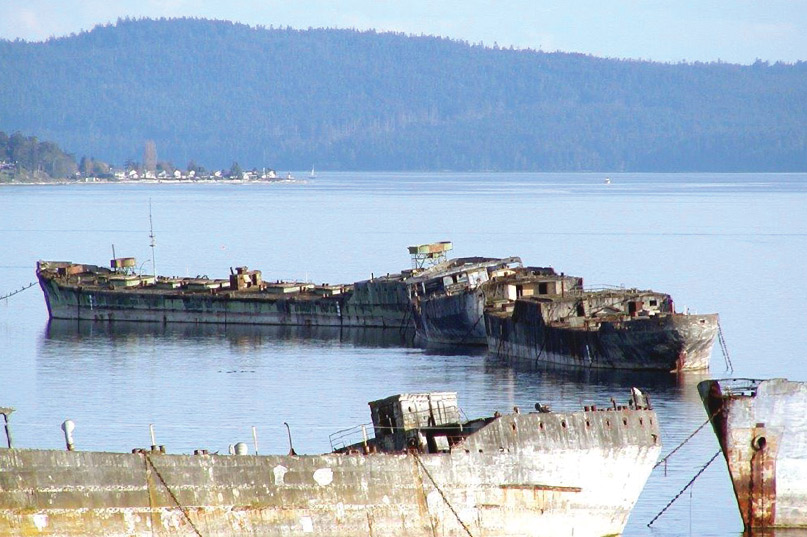
The Artificial Reef Society of British Columbia (ARSBC) and Catalyst Paper Corporation Powell River Division are working together to sink YOGN-82 — a historic U.S. World War II vessel—to convert it into an artificial reef. This ship is one of four vessels planned for reefing, which currently make up part of a 10-vessel breakwater infrastructure in British Columbia and are the last of their kind afloat anywhere in the world. Howie Robins, Reef Society President, remarks “These wartime relics are already floating artificial reefs based on the generations of biodiversity on their hulls. When fully submerged, these ships will form a pinnacle oasis for marine flora and fauna settlement with scale and habitat complexity.” The other U.S. ships to follow suit are Emile N. Vidal, Quartz, and the S.S. Peralta (the oldest, launched in 1921).
Marine life habitats are deteriorating at an alarming rate globally, impacted by development and tourism, accidental oil spills, and weather. The ARSBC creates sustainable artificial reefs around the world for the enhancement and protection of sensitive marine habitats, while also providing scuba divers with interesting recreational destinations. These artificial reefs provide food, shelter, and spawning areas for a variety of life.
ARSBC has sunk more vessels and aircrafts than any other non-profit group in the world. The YOGN-82 will be the ninth ship the organization has sunk off B.C.’s west coast since 1991, the last being the former Her Majesty’s Canadian Ship (HMCS) Annapolis in Halkett Bay off B.C.’s Gambier Island. ARSBC’s project partner, Catalyst Paper Corporation manufactures diverse printing papers for retailers, publishers, and commercial printers across North America, Latin America, the Pacific Rim, and Europe. They’re also ranked as one of the 50 Best Corporate Citizens in Canada by Corporate Knights magazine.
The four ships—up to 420’ long and weighing between 4,000 and 8,000 tons—are to be placed at variable depths in a group formation ranging from 80’ to 115’ for divers of all skill levels. Divers will be able to swim to each wreck relatively easily for a historic underwater tour.
The first of these colossal concrete vessels to be sunk, the YOGN-82, is a U.S. Navy gasoline barge and one of 22 unpowered B7 A2 gasoline barges built by Concrete Ship Constructors in National City, CA. The “YO” stands for “Yard Oiler,” the “G” for “Gasoline” and the “N” signifies the vessel’s lack of engines. She’s 367’ long and weighs a little less than 5,000 tons — sure to create one massive and attractive reef for visitors and marine life alike!


